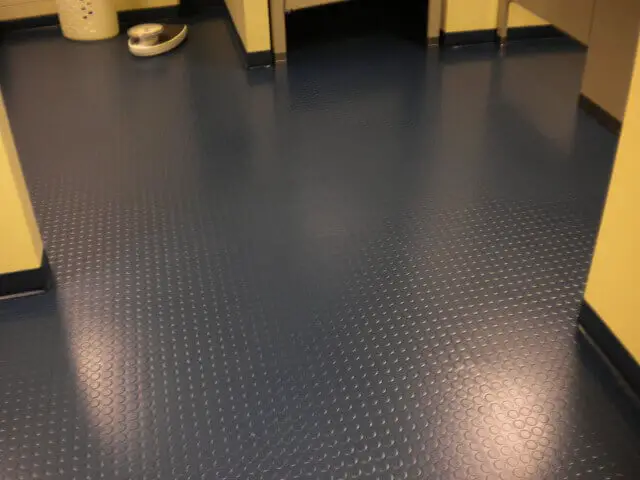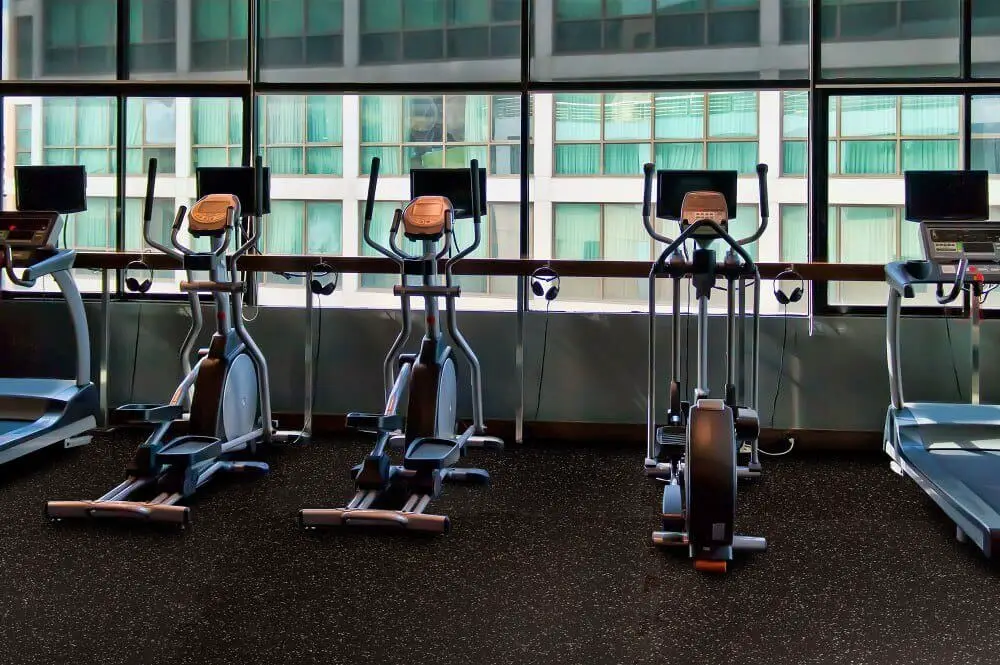Rubber flooring is a very durable type of floor, it is waterproof and can withstand wear and tear, but like other types of floor, rubber floor requires proper care and maintenance to help it maintain its style and vibrancy.
Fortunately, the methods on how to clean rubber flooring are very easy and require fewer cleaning items compared to other flooring types.
Aside from maintenance, all thanks to their durability, rubber floors can absorb sound and impact, resists the growth of mold and bacteria, and is also water- and slip-resistant.
How To Clean Rubber Flooring
Table of Contents
Routine Cleaning
Create a cleaning routine for your rubber floor where you start by Vacuuming the floor thoroughly to remove all the debris and dirt.
Try Working from one side of the room to the other so that no spot is missed. Allowing dirt to become accumulated on your rubber floor can cause it to wear unevenly and lose its shine.
Using warm water and mild dish soap mixture, begin mopping the floor, starting at the area farthest from the door of the room and working your way toward the door; this way, you don’t get to step on the newly mopped floor while trying to exit the room. You also need to constantly wring out the mop as you clean.
After mopping, allow the floor to air dry. Rubber floor, unlike most types of floors like hardwood, is water-resistant, so you do not have to worry about moisture damage.
To hasten up the air-drying process, you can try opening a window in the room if the weather allows it and allow your floor air dry quickly. When cleaning your rubber floor, you need to avoid using harsh cleaners.
Using Some solvents and acids regularly can soften or even erode your rubber flooring. Although rubber floors are known for their durability with normal wear and tear, cleaning with harsh chemicals can damage your rubber floor. Try using only mild soap and water whenever possible.
One costly mistake you can make with rubber flooring is not waiting until 72 hours after installation to clean it. Immediately after installation, Rubber flooring is very soft but becomes harder and more durable as it cures over time.
That is why most manufacturers typically recommend waiting for at least 72 hours before cleaning. Trying to clean your floor earlier could cause permanent damage to your floor.
How To Remove Tough Stains From Rubber Floor
Using Vinegar
If you have a water-based stain like sweat or soda on your rubber floor, it can be removed with a white vinegar solution. Simply Mix one part water with one part white vinegar. Then Use a towel to apply the mixture to the stained area and start rubbing in small circles to lift the stain.
Once the stain has been removed, you can mop the area with mild dish soap and water, just like a regular cleaning routine. Finally, Allow the floor to air dry completely.
Using Turpentine
This is for oil-based stains, and before handling Turpentine, you need to make sure to wear rubber gloves, ventilate the area properly and prevent pets or children from accessing the room due to the high toxicity level of the chemical, so it should be handled with care.
Start with Pouring about three teaspoons of turpentine onto a clean, dry cloth, and use the cloth to blot the area to lift the stain.
After removing the stain, mop the area with soap and warm water and allow the area to air dry.
Turpentine should only be used as a last resort for severe, oil-based staining.
You also need to keep an eye on the amount of turpentine used on your floor because using excess can stain your rubber floors.
Using Paint Thinner
If paint was spilled on your rubber floor, you could use a small amount of paint thinner to remove it. Make sure to wear rubber gloves, properly ventilate the area, and secure all your pets and children elsewhere before starting this process.
Start by Pouring a small amount of paint thinner on a clean, dry cloth and use it to wipe the stained areas in a short sweeping motion, making sure you use a new side of the cloth each time. This will help to lift and peel the paint stain.
Then use a soft broom and a dustpan to remove the paint flecks and dispose properly.
Finish the process by using soap and warm water to mop the floor as normal, and allow the area to air dry.
Maintaining Your Rubber Floor
Clean Up Spills As Soon As They Occur
Allow Standing water to remain on your rubber floor can damage the underlying adhesive that holds the rubber to the subfloor. Do always wipe up spills or standing water as soon as they occur or noticed to keep your rubber floor in good condition.
Create a regular cleaning routine. Regularly Vacuuming or sweeping your rubber floor will help to prevent dirt and debris buildup and keep your floor looking bright and new.
Dirt and debris can scratch rubber floor surfaces also, so alongside vacuuming or sweeping every other day; you also want to Mop the floor with soap and water at least once a week.
If you have a hard time remembering your cleaning routine, you can try Creating a calendar reminder that can help you remember. The first 6-12 months of your rubber floor installation is very fragile, and the floors should be treated with adequate care.
This is because it takes Rubber floors quite sometime before they begin to harden, this means rubber floor actually becomes more resistant to dirt and wear as they age.
However, to enable your rubber floor age well, you need to take very good care of it, especially during the first 6-12 months of installation. Making sure to vacuum and mop regularly.
Conclusion
Knowing how to clean rubber flooring will enable you to properly take care of the floor and keep it looking good for a long time. Although rubber floors are very durable, they still require regular care and maintenance in order to last for a very long period of time.


